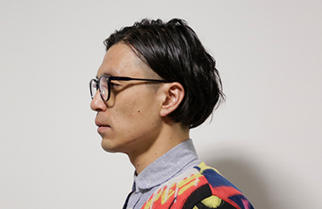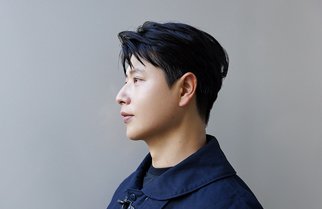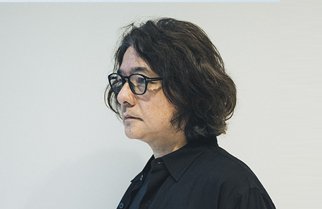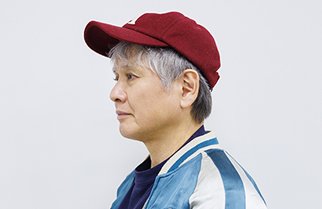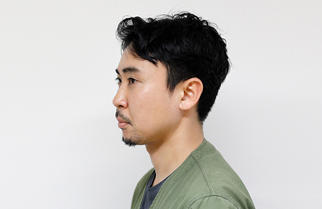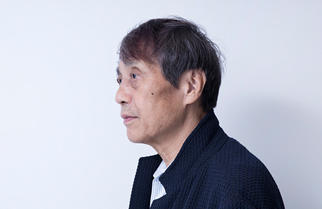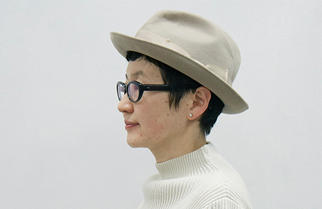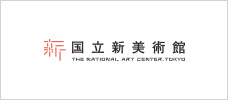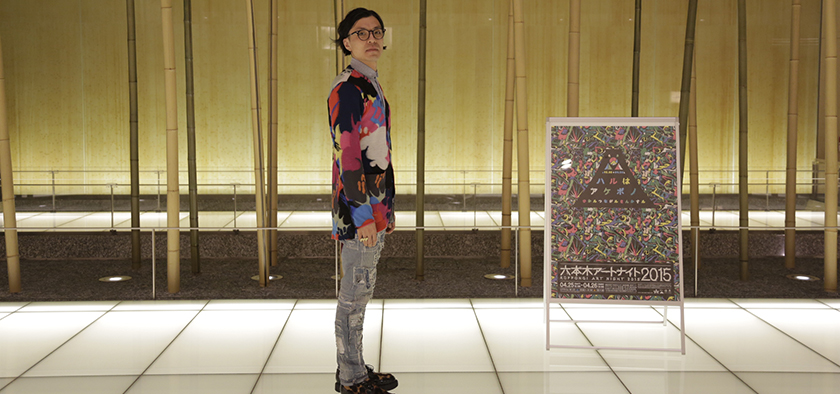
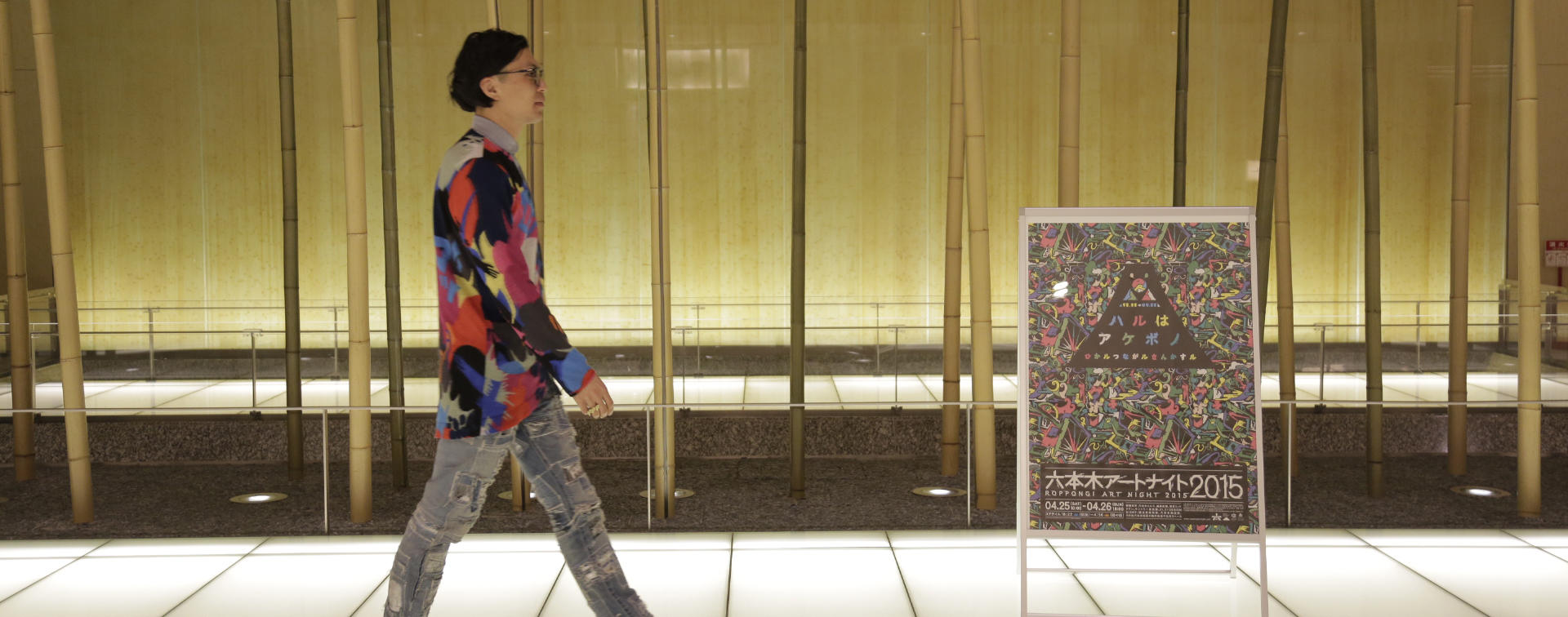
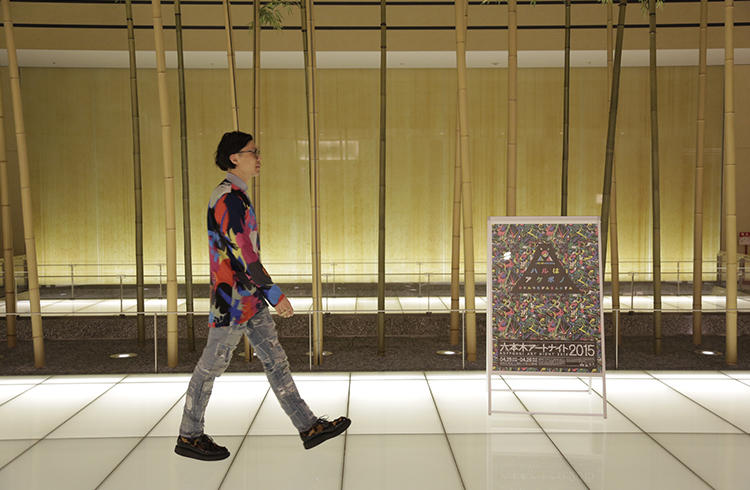
A gathering place in Roppongi for cool otaku
A space to transmit the fusion of art and pop culture
Fantasista Utamaro, an artist who works in many genres, drew the main poster for Roppongi Art Night 2015 , an event held April 25 (Sat) - 26 (Sun.) Utamaro has created artwork for Yuzu and Dempagumi. inc. and has directed music videos for Pharrell Williams, livetune feat. Hatsune Miku "Tell Your World". He has also published a magazine called "WHAT'S A FANTASISTA UTAMARO!?" and has worked in fashion projects. Utamaro, who says that everything from manga to art can be defined as art, talked about how he can envisage otaku (nerds) gathering in Roppongi in the future.
The need for a wider definition of art
I feel that the term "art" is defined in a rather distinct way in Japan; it's as if the word has a connotation of something high-brow and inaccessible. I personally feel that the essence of art is unconstrained, free expression. But at the Roppongi Art Nights I've been to so far, I couldn't help feeling that things seem restricted.
For me, art encompasses everything from manga and anime to traditional crafts and pop idols. This year, Seiichi Saito-san of Rhizomatiks was media art director of Roppongi Art Night, and he took the stance of incorporating new genres which I thought was great.
With the Roppongi Art Night 2015 poster that I was asked to draw, I tried to conjure a Japanese image. The theme for this year's Art Night - "Haru wa Akebono" (In spring, it is the dawn) - was decided later. In the poster, I drew dekotora (decorated trucks) which were shown in this year's event as well as Ukiyo-e scenery such as Mt. Fuji amid clouds and waves; I also included the type of calligraphy used for banners in sumo tournaments. The poster expresses endless proliferation - a concept that is at the base of all my works.
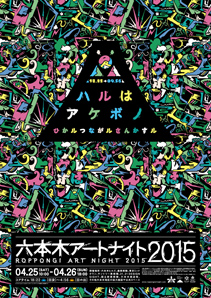
Roppongi Art Night 2015
Roppongi Art Night is an annual one-night-only event held in the area of Roppongi for the celebration of art. The event marked its seventh year this year and was held April 25 (Sat) - 26 (Sun). The photo above is one of the poster created by Fantasista Utamaro.
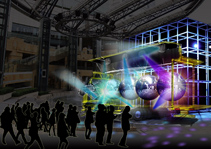
Art Trucks
The art trucks were one of the main features of Roppongi Art Night 2015. Decorative trucks named "Haru-go" and "Akebono-go", decked with LED lights and mirror balls, were shown in various places in Roppongi. The displays on the trucks were made to show words that visitors sent through their smart phones.
Bringing the Akihabara otaku culture to Roppongi
The fashion show by Mikio Sakabe-kun held in 2011 in Tsutaya Tokyo Roppongi was another memorable Roppongi project I was involved in. We organized a guerrilla stage show by Dempagumi. inc. whose members at that time were performing as "underground idols." I'd got to know about Dempagumi. inc. a few years before the fashion show; I'd been asked to do the interior design for the bar Akihabara Dear Stage where they were performing. It was there that I saw the "otagei" (dancing by otaku to show support for the idol singers) for the first time and was struck by surprise. I thought, "This is terrific. I didn't know that such a hot genre existed." Then I created a team called "SAIZEN 00" for cultural exchange and started doing art projects.
The Tsutaya store in Roppongi was chosen for the venue because I thought that a video rental store is a very Japanese sort of place. Another reason is that I wanted this miraculous "otagei" which had been flourishing in Akihabara to make an explosive impact in Roppongi - an area which is like foreign territory.
Ota (otaku) are not doing the "otagei" in order to be seen by other people: their dance is an expression of devotion to the idol singers, and is like a loving prayer. I got up on the stage at Akihabara Dear Stage and earnestly asked each ota to participate in the Roppongi show. I said, "A few years ago, I encountered otagei on this very stage and was electrified. Please participate and help make this an exciting event." The show drew about 3,000 people; it got so crowded that we had to restrict the number of visitors. We were really happy about that.
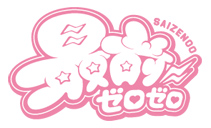
SAIZEN 00 (front line zero zero)
A group for "hyper entertainment" formed by Fantasista Utamaro, Its members include Maiko Fukushima (known as Mofuku-chan) who is representative of Akihabara Dear Stage, fashion designer Mikio Sakabe, and designer Toshiyuki Sugai of Semitransparent Design. The group name comes from the otaku expression "saizen zero zure", which refers to a position in the front row of the audience directly opposite an idol singer.
The benefits of physical training
I often come to Roppongi now to go to the gym. Last year, I went 160 times despite the fact that I spent almost half of the year in New York. I started going because I'd put on weight and was always feeling tired. And this gym was used by an acquaintance of mine who looked really vibrant. I wonder if you remember an advert that used to be in the "Shukan Shonen Jump" magazine. It showed [a comic strip of] a spindly boy who, after using a device called Bullworker, becomes suntanned and muscular and popular with the girls. I go to the gym with that in mind. (laughs)
By actually doing training, I've realized that exercise has a good effect not only on the body but also on the mind. I've found that when trying to exercise a certain body part, it's not possible to do it by just thinking about it - the body won't move the way my mind tells it to. The key is image training: when I imagine in my mind that a certain body part and my brain are all on the same flat level, it allows me to lift heavy things that I couldn't lift before.
This discovery has been thrilling. It has made me see that I'd been doing too much thinking when dealing with things. I now understand that by not depending solely on using the brain, we can become more creative in work and our lives - all the parts become linked. So I'm really into physical training now and recommending it to everyone.

Sensing the purity of manga and anime
At university, I started a "dojinshi" (self-published) manga magazine called "mashcomix" with my friends from yobiko (private school to prepare for college entrance exams). Fantasista Utamaro is a penname I adopted then, thinking I might also use the name when doing illustration jobs. I didn't know then that illustration would become my main line of work.
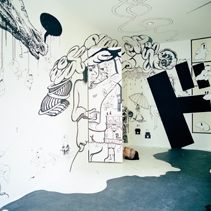
mashcomix
A group of artists that calls itself a "creative manga group." Comprised of Fantasista Utamaro, manga artists, illustrators, and designers, the group has self-published eight magazines and has created and exhibited "HOUSE" - a three-story house decorated with manga images. The group is engaged in a wide range of activities, from creating manga for regular magazine series to undertaking interior design.
My friends and I went to art college because we were influenced by manga and anime. We started "mashcomix" with the desire to give our own interpretation of manga and anime. We wanted to take elements out of manga and give it a different form - to mash up the concept of manga. So we've done things like holding an exhibition of a whole house decorated with manga and making a book with all its pages sealed. Put simply, we are blending design and art.
The world of manga and anime has been the purest form of culture I've encountered in my life up till now. Like sushi, it's a genre that we can be absolutely proud of presenting to the world. That's why I'm going about my daily activities; I'm continuing to pursue the potential lying hidden in Japanese pop culture.
The need for someone to convey culture
Since 2014, I've been working in New York and other countries. Of course I'm interested in encountering new cultures, but I have an even stronger urge to disseminate the things that I think are wonderful. I'm a person who likes to act like a messenger; there was even a time when I used to say that "scribe" was the word to describe my job. I have an impulse to go out and say to people, "This is terrific, don't you think?" or "There's an interesting person I'd like to introduce to you." I feel that the world needs many more people who will convey information to others.
I love things that are cool and I love design. And I love anime and manga just as much. So I'm always wondering how I can maximize the potential in these genres and leave a legacy for the world. Some people don't understand what is good about certain things, so I have to think about how I can communicate to them - how I should present things to them. I also ponder about how we should relay information to the next generation and how we could move things toward new chemical reactions.
The loveliest thing a person can do
I believe that the loveliest thing that a person can do is to create something - whether it is a picture or music or a meal. It's the creation of something which is most important and yet it seems to me that it's not appreciated enough now. In the visual field for instance, there are people making animation movies and people involved in hands-on creative work; they make things of such high quality but I've seen so many workplaces where such people are not adequately rewarded.
While I'm just a humble creator, I don't want to be involved in projects where the people I'm working with receive that kind of treatment. I think that my talent, if you can call it that, is in seeing the potential in the creators I work with and in drawing out the best in them. It's important to be tolerant and accepting, and to have fun celebrating our diversity. Last year, I was given the opportunity to make the "It Girl" music video for Pharrell Williams. Working in a place with a different culture with creators I believed in was an experiment for me.
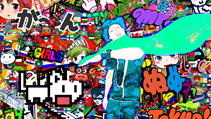
"It Girl" video
An animation video for Pharrell William's "It Girl" song produced by Takashi Murakami and directed by Fantasista Utamaro. It featured cel animation and motion graphics. Many Japanese creators such as Sou Ootsuki participated in making the video.
© 2014 Mr./Kaikai Kiki Co., Ltd. All Rights Reserved.
I'm not saying this to try to look cool, but I no longer want to do things just for my own benefit. I think we are coming to the end of an age when just one person could boast about doing something all by himself. For a long time, I've been searching for what is valuable to me, and now I feel I have found it. Right now my wish is to steer all the great things being created into the right direction. That has become my lifework.
As I mentioned earlier, the concept of my artwork is "endless proliferation." While the various works have been trimmed to fit the size of the paper or canvas, all of my works are actually spreading out to infinite space. Making the decision on how to do the trimming is so important - it's the same with a person's life. After all, you never know when you are going to die.
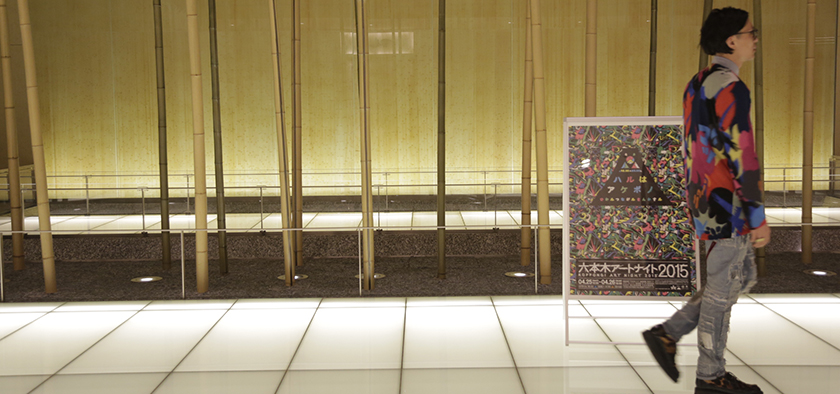
Transforming the otaku image in the streets of Roppongi
It seems to me that in Roppongi, where there are many foreigners, the Japanese are being influenced by the foreigners. For example, the young people who come here think that foreigners are cool. I wish we could turn the trend in the other direction so that foreigners will come here and say, "Cool!" as they do in Akiba (Akibahara)
The ota world seems to be currently shifting from the subculture to the mainstream, so it would be interesting if there was a space in Roppongi to transmit that culture - a place with a new image that is different from places like Akiba and Nakano Broadway. We could set up a space that has Japanese pop culture at its core. And from the streets of Roppongi, we could form a new concept - the concept of the cool ota who is popular with the girls. Of course, we will have to do this in gradual stages with tact and care, and with the proper strategy, so I realize it will not be easy...
Young people today can perhaps be said to be of a "hybrid generation"; they think anime is chic, they make their own clothes, and they are sophisticated. In adverts, ota have recently come to be depicted as attractive guys, but on the other hand there are many people who simply touch the surface of subculture, and think it's enough just to use it as a token, using a bit of Hatsune Miku, for example. Wonderful things are being created and yet there are people who just use things without even understanding their context. That frustrates me sometimes. It seems that there are more and more cases where the precious culture is being damaged and just consumed.
Akiba as a sacred place and Roppongi as an "Anywhere Door"
Japanese artists who are recognized overseas express Japanese elements in an appealing way. Roppongi would be the ideal location for setting up a place that blends Japanese art and culture with all kinds of other elements. I myself would also like a gym built there to do total workouts. (laughs) We could keep Akiba as the sacred place and turn Roppongi, with its many foreigners, into a place that is connected to the world, like the "Anywhere Door."
I think it's also about time for ota to do some rethinking and change themselves. The ota culture has become so big that it will no longer do for ota to do things solely for their own satisfaction. Of course, ota have a sense of mission and loyalty. When a good anime is made, they buy DVDs, and they buy lots of CDs of the idol singers they are fond of. Ota are perhaps similar to patrons in the art world; they lovingly give support so the artists can continue their activities.
But buying CDs and DVDs is a personal thing, and is ultimately for oneself. I think ota should spread their love to the outer world a little more. Ota themselves are probably beginning to sense this too; in the next 10 years or so, they will probably find that they cannot avoid contact with the outside world. So in light of that too, I think it will be a good idea to set up a space for ota somewhere.
Events where everyone goes "Yay"
Roppongi promotes itself as an area of design and art, but I get the feeling that by doing that, it's restricting itself. Perhaps a better idea might be to give the area the theme of "monozukuri" (making things). Monozukuri would include design and art and music and other things. You could say that Roppongi is a place that welcomes anything creative. That way, I think more people would say, "Yay!" and come here.
Festivals and events such as Roppongi Art Night are supreme because those are the places where everyone can go "Yay!" On Halloween night, the streets of Roppongi and Shibuya are probably the liveliest in the world. During the World Cup, I always go to the scramble intersection in front of Shibuya station. Half of the people there aren't interested in soccer, but we all high-five each other anyway. What matters is not the content but the act of gathering in the same place and doing something together. I think the essence of human power lies in the strength of bonding. It's the bonding that matters; the physical things that are visible to the eye are actually not all that important.
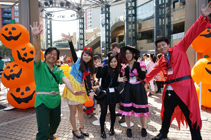
Roppongi Halloween Parade
The photo is of people who participated in a parade on Oct. 25, 2014 at Roppongi Hills. Another parade was held during the "Roppongi Halloween 2014" event which was sponsored by the local shopping district. Many people came to walk the 1.7 km distance from Roppongi Junior High School to Keyakizaka, through the Roppongi intersection and to the National Graduate Institute for Policy Studies.
It's possible to use various ways to gather people, but when people come from their own accord and really enjoying what they are doing, so much energy is born. A good example is the Sumidagawa Fireworks Festival. Everyone - male and female, young and old - look up at the sky the instant a firework goes off and they're all thinking "Wow!." It's great how everyone is thinking the same thing, isn't it? A huge energy is unleashed when people's attention is focused on one single thing. I guess that's what culture is about.
Editor's thoughts
The shooting session for the main photo of this interview article was held at the Garden Terrance in Tokyo Midtown Galleria. We asked Utamaro-san to pose in front of the Roppongi Art Night poster which had just been printed. The Garden Terrace, where bamboo trees are planted, is the venue for the Roppongi Mirai Karuta Taikai (card game) during Roppongi Art Night. We hope that you will come and look at this event as well.(edit_kentaro inoue)




